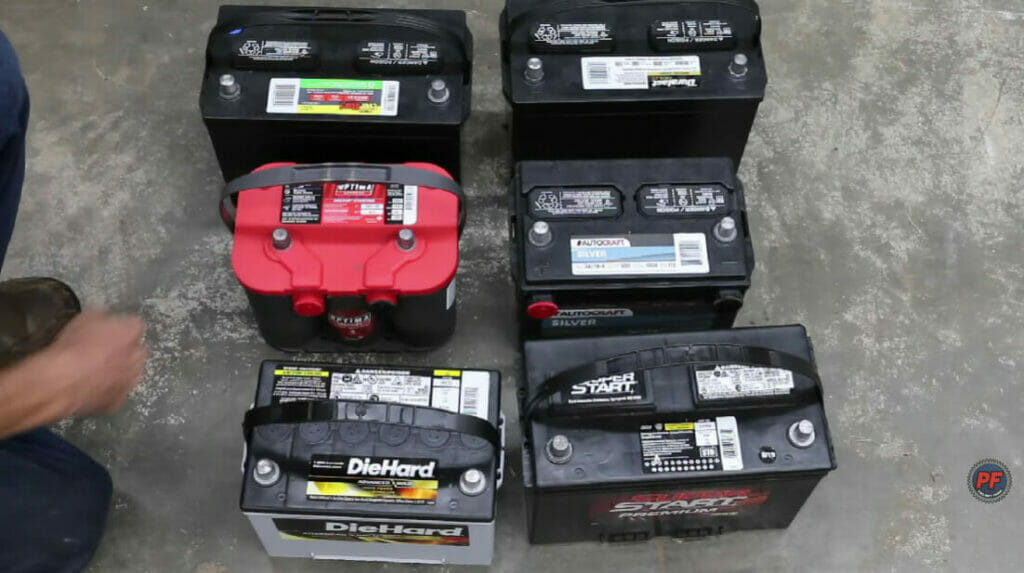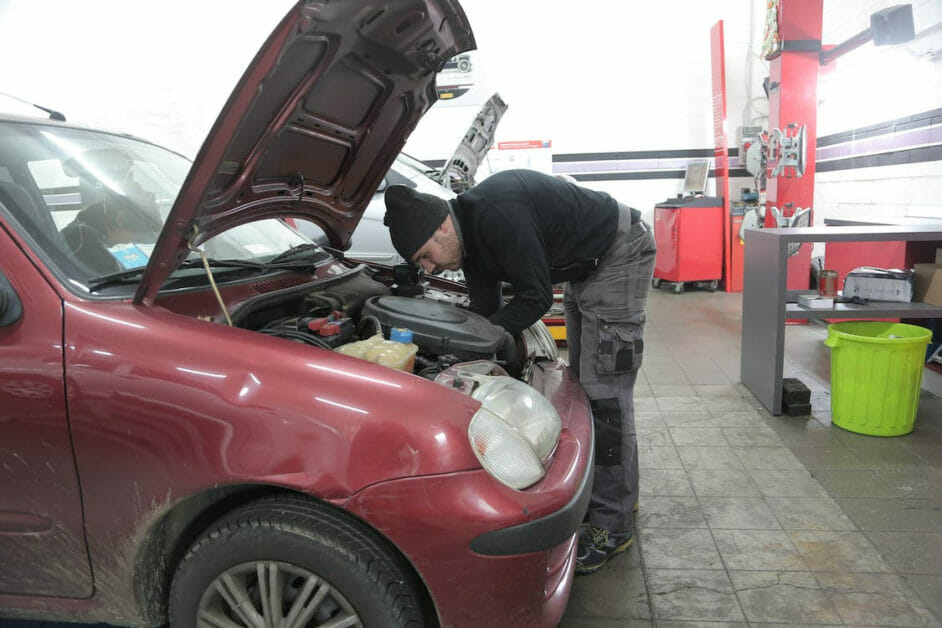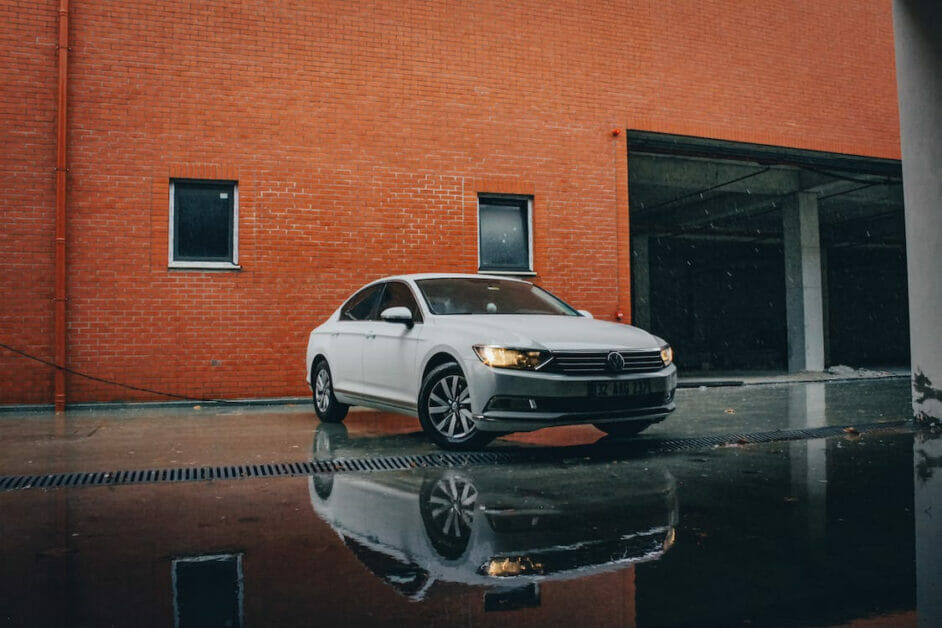Can a Car Battery Get Wet? (The Surprising Truth)

Can a car battery get wet? This question may appear in various situations – you could be caught in a torrential downpour, dealing with a sudden snowfall, or even facing a flood. Understanding the impact of water on your vehicle’s battery can be the difference between reaching your destination and being stranded.
Believe it or not, car batteries can survive water exposure thanks to their durable casing made of polypropylene resin. However, moisture and humidity could still affect car batteries. Thus, there are still certain things to be aware of regarding moisture and your vehicle’s battery.
In this article, I will cover just that, so you can confidently drive through the rain without any doubts. Trust me; you’ll be glad you know the facts!
Can a Car Battery Get Wet?

Understanding Vented and Sealed Car Batteries
Vented batteries have vent caps that release gases when they’re in use. On the other hand, sealed batteries don’t have these vents, so they’re better when handling moisture.
However, both types of batteries are designed to be water-resistant, so getting a bit wet shouldn’t be a cause for alarm. A sturdy, water-resistant casing generally protects car batteries.
Effects of Moisture and Humidity
Let me tell you- if you expose the battery terminals to wet conditions for too long, you may start to notice some corrosion, which isn’t good for the battery’s performance.
So, it’s a good idea to keep the terminals dry, and if you spot any corrosion, you should get it cleaned up ASAP. You really don’t want that stuff affecting the battery’s lifespan or causing it to fail!
Effect of Rain on Car Batteries

Now, what about when it rains? Car batteries are under the hood, but they’re pretty exposed regardless of that.
But they’re built to handle this – after all, they have to be prepared for a wide range of weather conditions, including heavy rains. So, while our car battery might get wet occasionally, it’s not the end.
That being said, we should still be cautious. If we were to take the battery out of our car and leave it in the rain, the terminals and the lid would be more vulnerable to water damage.
So, always be mindful when handling your car battery, and try to minimize its exposure to the elements, especially if it’s out of the vehicle.
What Happens When a Car Battery Gets Wet
Damage from Submerging
The real trouble starts when you submerge your car battery in water.
The vents on top of your battery help gases escape, but water can seep in and cause serious damage when you dip that battery underwater.
Let’s talk about what happens when water meets your battery. The water can dilute the chemicals inside, leading to leaks and malfunction.
Corrosion and Rust

Raindrops on your car battery can lead to some unwanted guests – corrosion and rust. You see, when moisture gets on your battery terminals, it increases the risk of corrosion.
Prolonged exposure to wet conditions may cause the metal parts of the battery to corrode, and we all know that’s not a good thing.
Also, rust can form on metallic components, like the engine and electrical system. But guess what? There are some things you can do to prevent this from happening.
Wipe down the metal tray your battery sits on to avoid corrosion and ensure the plastic covers are in place over the battery terminals. Let’s say your battery already shows signs of rust or corrosion.
Don’t worry too much! You can always clean it up and remove the corrosion with a wire brush. It’s a simple fix and a surefire way to extend the life of your battery.
So, folks, remember to keep your battery dry, avoid submerging it, and watch out for any signs of corrosion or rust. Take these precautions, and your battery should stay in tip-top shape!
What to Do When a Car Battery Gets Wet
| Steps | Description |
|---|---|
| Step 1: Safety precautions | Ensure your safety by wearing gloves |
| Step 2: Disconnect the battery | Using a wire brush or battery terminal cleaner, use baking soda and water to clean the battery terminals and connectors. Rinse with clean water and wipe dry. |
| Step 3: Remove the battery | Remove the battery from the vehicle for easier access and cleaning. Be cautious when handling the battery, as it may be heavy. |
| Step 4: Inspect for visible damage | Check for visible signs of damage, such as corrosion, electrolyte leakage, or swelling. If the battery is severely damaged; it may need professional inspection or replacement. |
| Step 5: Clean the terminals and connectors | Use baking soda and water to clean the battery terminals and connectors using a wire brush or battery terminal cleaner. Rinse with clean water and wipe dry. |
| Step 6: Dry the battery | Ensure the battery is completely dry before reconnecting or reinstalling. Use a clean, dry cloth or allow it to air dry in a well-ventilated area. Avoid using heat sources or direct sunlight for drying. |
| Step 7: Reconnect the battery | If the battery was removed, carefully reinstall it back into the vehicle. Reconnect the battery cables, starting with the positive (red) cable followed by the negative (black) cable. Ensure they are securely tightened. |
| Step 8: Test the battery | Turn on the ignition and check if the battery is functioning properly. If you still encounter issues, it’s recommended to consult a professional mechanic. |
| Step 9: Maintenance and prevention | Regularly inspect and maintain the battery to prevent water damage in the future. Consider using protective covers and applying anti-corrosion sprays to prolong its lifespan. |
How to Prevent Water Damage
Proper Installation and Maintenance

Believe it or not, car batteries can survive water exposure thanks to their durable casing made of polypropylene resin.
But that doesn’t mean we should be careless about protecting those powerhouse cells. Let me share a few tips on proper installation and maintenance to avoid water damage.
First up, always install the battery terminals with care. Ensure the connections are tight; loose cables can let in water and hurt your engine’s performance.
And don’t forget to clean the battery terminal regularly – a buildup of corrosion can invite water damage.
Always keep an eye on the battery’s plates for maintenance. Ensure they’re submerged in the electrolyte solution to keep them from drying and more susceptible to water damage.
Be careful because if the electrolyte levels are too high, the gasses can mix with the air and cause corrosion.
Measures for Wet Weather Conditions

As you know, I love my cars and never let a little rain ruin my parade. I take simple precautions to protect my babies during wet weather. Let me share some of those with you.
- Try to find a covered or well-drained spot when parking outside during rain. The goal is to minimize exposure to water, especially if you don’t have a waterproof cover.
- If your car isn’t under a cover, and it’s raining, grab a towel and dry off the area around the battery before you start the engine. This will help prevent water from seeping into the electrical system.
- For electric vehicles, ensure your battery is fully charged and has proper visibility to avoid water infiltrating the electronic device. Additionally, consider installing a water shield as an inexpensive and easy measure to protect against moisture damage.
Taking extra precautions during wet weather will ensure you and your engine have a long and happy life together.
Remember, a little effort now can save you a lot of trouble (and money). Stay safe and happy driving!
Water Damage Symptoms
| Water Damage Symptoms | Description |
|---|---|
| Corrosion | Formation of white or greenish deposits on the battery terminals and connectors. |
| Slow cranking | Difficulty starting the engine, with the starter motor turning slowly or producing weak cranking sounds. |
| Foul odor | Presence of a strong, unpleasant smell coming from the battery area, indicating possible leakage or damage. |
| Electrolyte leakage | Visible signs of liquid seeping or leaking from the battery casing indicate a compromised seal or cracked casing. |
| Battery swelling | The battery appears larger or bulging, indicating excessive internal pressure caused by water intrusion. |
| Reduced battery life | Significant decrease in the overall performance and lifespan of the battery due to water-related damage. |
| Electrical malfunctions | Issues with electrical components, such as dimming headlights, malfunctioning power windows, or erratic dashboard indicators. |
This will help to prolong the battery’s life and ensure optimal performance for your vehicle.
Charging and Using a Wet Car Battery
Hazards of Charging a Wet Battery
You might think, “Can I charge my wet car battery without problems?”
Well, a wet car battery can be dangerous to charge because water is a good conductor of electricity. If water gets inside the battery, it can create a short circuit, potentially leading to some serious issues.
Besides the short circuit risk, water can dilute the battery acid and affect its performance. So, before charging a wet car battery, make sure to disconnect it from your car and give it a thorough drying.
Jumpstarting a Wet Car Battery
When your battery is wet, using jumper cables can be risky, too. You see, electricity, water, and car batteries don’t mix well, so it’s crucial to stay safe while jumpstarting your vehicle.
First things first – ensure that both vehicles’ engines are off. Then, ensure your car battery and the jumper cables are dry before connecting them.
Grip the insulated portions of the clamps; don’t touch the metal part, as it can lead to electrocution. If you have a power source or a car battery charger, make sure it’s water-resistant and that it’s also dry.
Keep an eye on your headlights, as dimming lights indicate your battery is losing power. Investing in a new battery might be wise if you notice any changes.
Remember, safety always comes first when working with car batteries.
Wrapping Up
Your car battery can indeed get wet without causing any significant damage. Now, of course, there are limits to this.
Leaving your car battery out in the rain for long periods might cause issues around the terminals and lid.
So, just like you wouldn’t want to leave your favorite power tools out in the rain, taking care of your car battery by not exposing it to too much water is essential.
But rest assured, driving your car in the rain shouldn’t harm the battery. The water-resistant casing should keep it protected.
Keep an eye on the charge and ensure it won’t leave you stranded in the bad weather.
References
Studies:
- Effect on water consumption by metallic impurities into electrolyte of lead-acid batteries. https://www.sciencedirect.com/science/article/abs/pii/S2352152X21007362
Organization:
- Battery Council International (BCI). https://batterycouncil.org/
Book:
- “Automotive Battery Technology” by Tom Denton
Website:
- Battery University. https://batteryuniversity.com/articles
Video References
Project Farm
proclaimliberty2000
